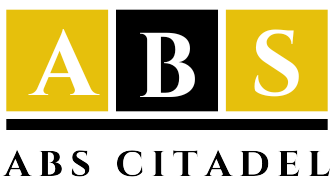
The Latest Web Design Trends: What’s In and What’s Out
In the rapidly evolving digital landscape, staying on top of the latest web design trends is essential for businesses. A well-designed website not only attracts visitors but also enhances user experience and drives conversions. In this article, we will explore the most current web design trends to embrace, as well as those that are becoming outdated.
- Dark Mode:
Dark mode has gained immense popularity over recent years. With its sleek and stylish appearance, it reduces eye strain and extends device battery life. Incorporating dark mode into web design not only gives websites a modern look but also enhances visual hierarchy and draws attention to important elements. Many users now prefer dark mode, making it a must-have trend in web design.
- Minimalistic Design:
A clutter-free and minimalistic design approach is another trend that continues to thrive. Simplified layouts with ample white space, clean typography, and concise content make websites visually appealing and easy to navigate. Minimalistic designs help create a seamless user experience and place the focus on the most important elements, such as products or services.
- Neumorphism:
Neumorphic design, also known as Soft UI, is a rising trend that brings together skeuomorphism and minimalism. It involves creating digital elements that mimic real-world objects, such as buttons, switches, or cards, while keeping the overall design minimal and subtle. This design style adds depth and a tactile feel to user interfaces, providing a visually engaging and intuitive experience.
- Asymmetric Layouts:
Breaking away from traditional grids, asymmetric layouts are gaining popularity for their uniqueness and creativity. Asymmetric designs help capture attention and create visual interest by using an off-center balance. They allow for non-linear storytelling and enable designers to experiment with different placements and sizes of elements, making websites more memorable.
- Micro Interactions:
Delightful micro interactions have become a significant aspect of modern web design. These small animations or interactive elements provide visual feedback, guide user interactions, and enhance engagement. From subtle button hover effects to animated transitions, incorporating well-thought-out micro interactions into websites can greatly enhance the overall user experience.
Outdated Web Design Trends:
- Flash-based Websites:
Flash-based websites are becoming obsolete due to their incompatibility with mobile devices and their negative impact on loading speed and SEO. With modern web technologies, such as HTML5 and CSS3, it’s crucial to move away from Flash-based designs to ensure optimal performance and accessibility.
- Stock Photos:
Using generic and overused stock photos can negatively impact a website’s credibility. Authentic and personalized visuals are now preferred to establish a genuine connection with the audience. Professional photography, custom illustrations, and user-generated content contribute to a more authentic and engaging web experience.
- Generic Templates:
With the rise of website builders and CMS platforms, relying on generic templates can make your website appear outdated and lacking originality. Customized designs tailored to your brand guidelines and target audience help create a unique online presence that stands out in a crowded digital landscape.
To keep up with the ever-evolving digital world, businesses must embrace the latest web design trends. Integrating dark mode, minimalistic designs, neumorphism, asymmetric layouts, and micro interactions not only gives websites a modern look but also enhances user experience and engagement. On the other hand, leaving behind outdated trends such as flash-based websites, stock photos, and generic templates is crucial to stay relevant and competitive in today’s fast-paced digital landscape. Embrace these trends, and your website will not only impress visitors but also lead to better business outcomes.


